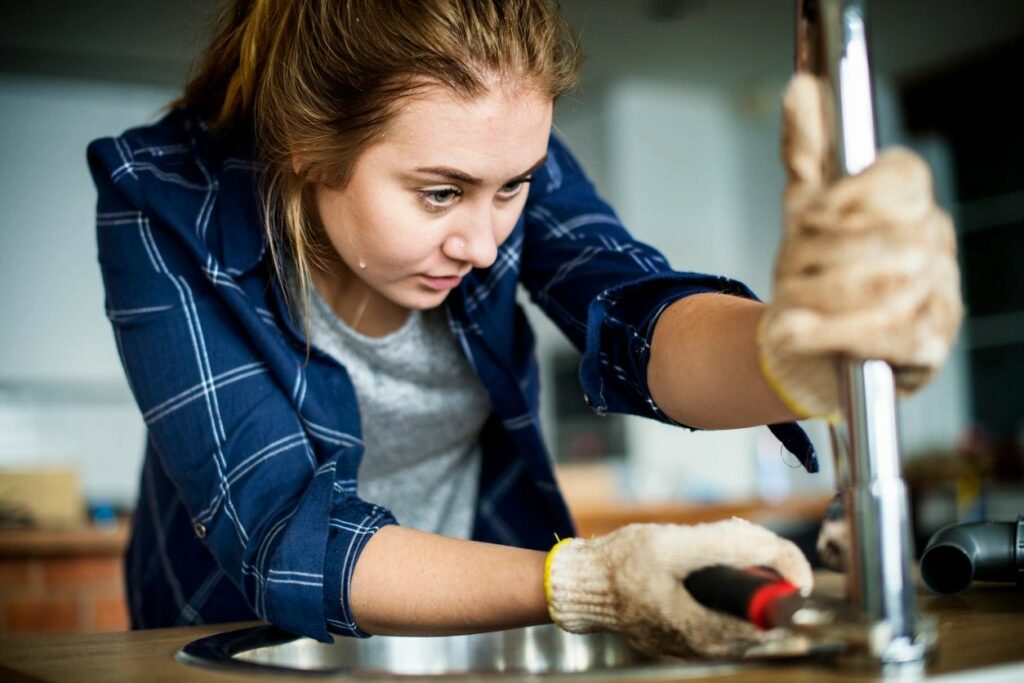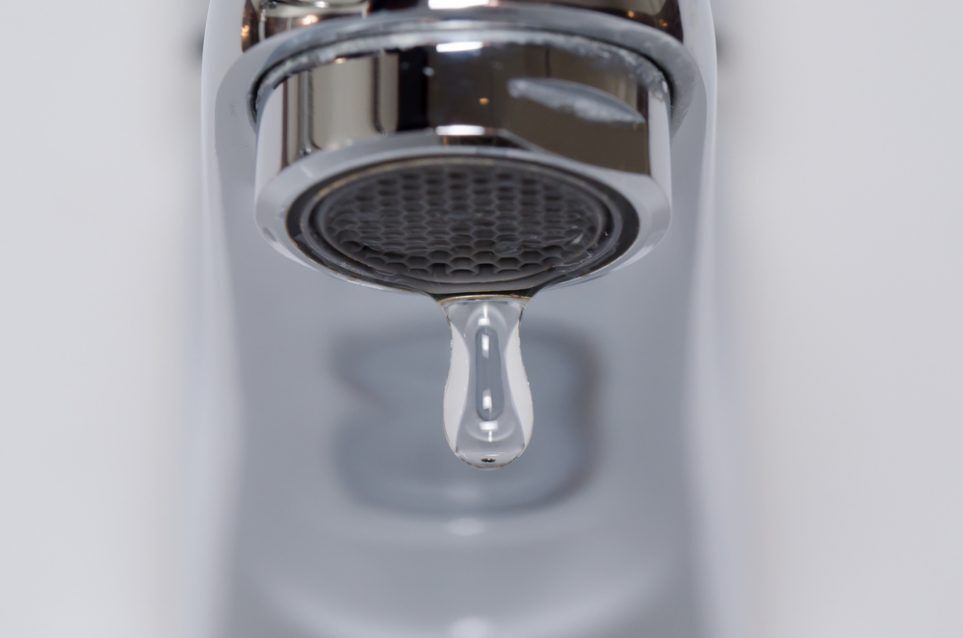How It's Needed to Repair a Faulty Faucet
How It's Needed to Repair a Faulty Faucet
Blog Article
We've discovered this article pertaining to Why Are My Faucets Dripping (And Can I Fix It Myself)? listed below on the internet and believe it made perfect sense to share it with you on my blog.

Trickling taps may appear like a small trouble, yet their influence goes beyond just the nuisance of the noise. From wasting water to sustaining unneeded economic costs and health and wellness risks, disregarding a dripping tap can lead to various repercussions. In this post, we'll explore why it's vital to address this common family concern promptly and effectively.
Waste of Water
Environmental Impact
Dripping taps contribute dramatically to water waste. According to the Environmental Protection Agency (EPA), a solitary faucet leaking at one drip per second can throw away greater than 3,000 gallons of water each year. This not only pressures water sources however additionally influences ecological communities and wild animals dependent on them.
Step-by-Step Guide to Repairing a Dripping Faucet
Tools Required
Prior to trying to deal with a trickling tap, gather the essential devices, consisting of a flexible wrench, screwdrivers, replacement components (such as washing machines or cartridges), and plumber's tape.
Typical Tap Issues and Their Solutions
Recognize the sort of faucet and the details issue creating the drip. Common problems include damaged washers, rusty shutoff seats, or defective O-rings. Refer to producer instructions or on-line tutorials for step-by-step advice on repair services.
Financial Costs
Boosted Water Bills
Past the environmental effect, trickling faucets can pump up water expenses substantially. The collected wastage over time equates right into greater utility expenditures, which could have been avoided with timely repairs.
Potential Residential Or Commercial Property Damage
Moreover, prolonged leaking can lead to harm to fixtures and surface areas surrounding the faucet. Water build-up can trigger discoloration, deterioration, and also architectural problems if left unattended, causing added fixing prices.
Wellness Problems
Mold And Mildew and Mildew Development
The constant existence of wetness from a trickling tap develops an optimal atmosphere for mold and mold growth. These fungis not only compromise interior air high quality yet likewise pose health and wellness dangers, specifically for individuals with respiratory system conditions or allergies.
Waterborne Conditions
Stationary water in dripping taps can end up being a breeding ground for bacteria and other virus, enhancing the threat of waterborne illness. Impurities such as Legionella microorganisms grow in stationary water, potentially leading to serious diseases when consumed or breathed in.
DIY vs. Specialist Repair
Pros and Cons of Do It Yourself Fixing
While some might try to repair a trickling faucet themselves, do it yourself repair work feature their own set of challenges. Without appropriate knowledge and tools, do it yourself attempts can aggravate the issue or cause insufficient repairs, extending the trouble.
Advantages of Working With an Expert Plumber
Employing an expert plumber guarantees that the underlying cause of the leaking faucet is addressed properly. Plumbing technicians possess the experience and equipment to detect and fix faucet concerns successfully, saving time and reducing the risk of further damage.
Ecological Obligation
Private Contribution to Preservation
Taking duty for taking care of trickling faucets lines up with broader efforts towards water preservation and ecological sustainability. Every person's activities collectively make a considerable impact on preserving priceless sources.
Lasting Living Practices
By prioritizing prompt repairs and adopting water-saving routines, people contribute to sustainable living techniques that benefit both existing and future generations.
Preventive Measures
Regular Maintenance Tips
To stop leaking faucets, carry out routine maintenance such as cleansing aerators, checking for leakages, and changing worn-out parts quickly. In addition, take into consideration setting up water-saving gadgets or upgrading to more efficient components.
Significance of Prompt Repair Works
Attending to dripping taps as soon as they're observed prevents more water wastage and prospective damages, inevitably conserving both water and cash over time.
Effect On Property Worth
Understanding of Well-Maintained Building
Preserving a property in good condition, consisting of dealing with upkeep issues like trickling faucets, improves its regarded value and desirability among possible purchasers or renters.
Impact on Resale Worth
Qualities with properly maintained plumbing fixtures, including taps, command greater resale values in the real estate market. Addressing trickling taps can add to a favorable perception throughout building evaluations and settlements.
Final thought
Resolving a trickling faucet surpasses plain convenience; it's an important step toward conserving water, decreasing financial costs, and protecting health and wellness and home. Whether with DIY fixings or professional assistance, taking action to fix trickling faucets is a small yet impactful means to advertise accountable stewardship of resources and contribute to a much healthier, more lasting future.
How to Fix a Leaky Faucet: Step-by-Step Repair Guide
A leaky faucet may seem like a simple annoyance, but if it's not fixed promptly, that leak could cost hundreds to potentially thousands. From water damage to mold, mildew, and high water bills, even a tiny leak can be catastrophic if left unattended. Damage like this can even affect the overall value of your home, so it's important to take the right approach for leaky faucet repair. You may need the help of a plumber in some cases, but we've got a few tips you can try on how to fix a leaky faucet before calling the pros.
Four Faucet Types
When you're learning how to fix a leaky faucet, the first step is knowing what kind of faucet you're working with! There are four common types.
Cartridge Faucets
Cartridge faucets come in one- or two-handled varieties. In one-handled cartridge faucets, hot and cold water combines in a single cartridge. In the two-handled versions, hot and cold water are controlled separately and mixed in the faucet.
Ball Faucets
Ball faucets have a single lever you push up and down to adjust the pressure and rotate to change the temperature. A slotted metal ball controls the amount of water allowed into the spout.
Compression Washer Faucets
They're the oldest type of faucet, but they're still used in many homes — especially older ones. Compression faucets have two separate handles that, when turned, raise or lower the washer that seals a water valve. This valve stops water from flowing through the faucet when it is turned off.
Disc Faucets
Disc faucets rarely need to be repaired due to their maintenance-free design. The water flow is controlled by two discs — the upper one raises and lowers against a fixed lower disc, creating a watertight seal. If your disc faucet starts leaking, you may need to replace the seals or clean residue buildup from the inlets.
Fixing a Leaky Faucet
Step 1: Turn Off the Water
Whether you're learning how to fix a leaky bathtub faucet or how to fix a leaky kitchen faucet, always turn off the water supply to your working area when you're fixing a leak. The last thing you want is a flood added to your list of things to fix.
Look for the shutoff valves below your sink or around the tub and turn them clockwise to stop the water flow. If your faucet doesn't have shutoff valves, you may need to turn off the water for the whole house. Check to make sure it's off by turning the faucet on. If nothing comes out, you're ready to start the repair.
Step 2: Take Apart the Faucet
How you disassemble your faucet depends on the type of fixture you have. You can use a flathead screwdriver to remove the caps on top of the handle or handles for cartridge and compression faucets. Inside, you should see handle screws. Unscrew these with a screwdriver to remove the handle.
Disc- and ball-style faucets will typically have an inlet screw near the handle, and removing that will reveal the interior of the faucet.
Detach the Valve Stem
For cartridge- and compression-style faucets, you'll see the inner valve stem or cartridge once you remove the faucet handles. If you have a compression faucet, unscrew the brass valve stem. If you have a cartridge faucet, pull out the cartridge. If your cartridge has been in place for a while, it may require some tools or extra force to remove it due to mineral deposits.
Examine and Replace Parts
Once you've removed the parts, check them out to confirm what needs to be replaced. You may see corroded rubber washers, O-rings, stems, or cartridges. On a ball-style faucet, check the seats and springs for damage.
If you need to repair a leaky disc faucet, check the inlet and seals on the lower disc.
Once you determine what parts must be replaced, visit your local hardware store. Bring the damaged parts with you to ensure you can purchase the correct components to replace them.
Clean Valves and Faucet Cavity
If you've removed a stem or cartridge, you may notice mineral buildup in the faucet's threads. Use white vinegar to clean the valve seat by soaking it for a few minutes, then scrub it away with a soft toothbrush and rinse with warm water. You can also clean the interior of the faucet in the same way.
Reassemble the Faucet
Once your faucet is cleaned and the required parts have been replaced, it's time to reassemble it. Put the pieces back together and slowly turn the water supply back on. Doing this slowly is crucial because too much initial water pressure can damage the new hardware you've just installed.
https://homewarranty.firstam.com/blog/how-to-fix-leaky-faucet

Hopefully you liked our section about Should I Repair or Replace a Leaky Faucet?. Many thanks for finding the time to read through our article. Enjoyed our article? Please quickly share it. Help somebody else find it. We take joy in your readership.
Report this page